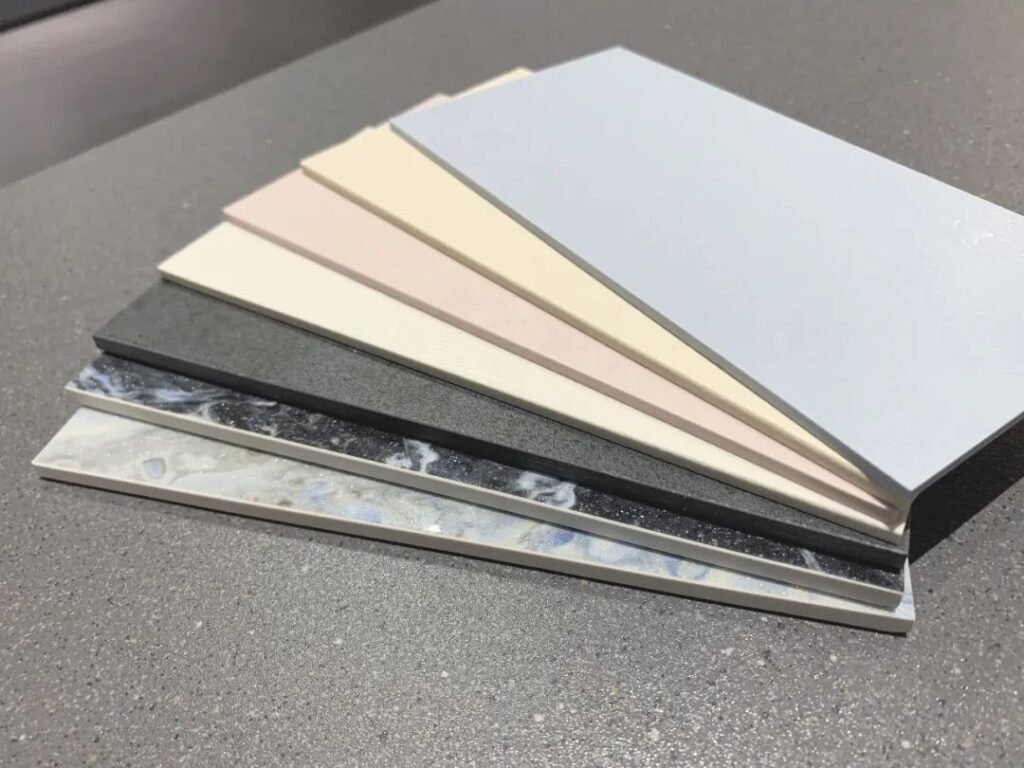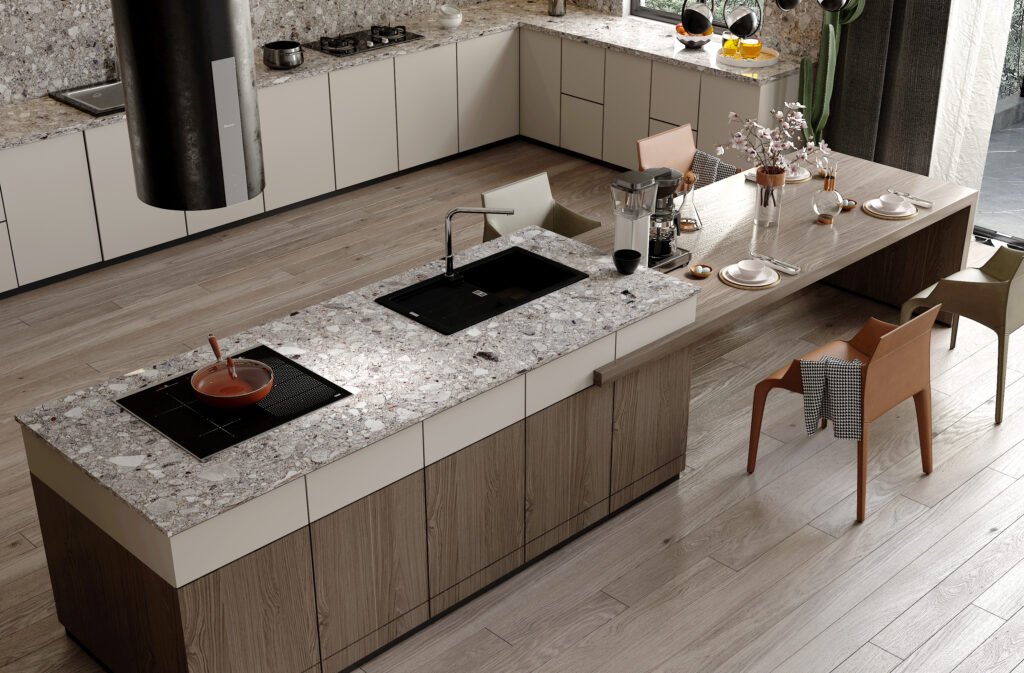As we all know, the main difference between the sintered stone (the sintered stone is also called as porcelain slab somewhere, and hereinafter referred to as “the sintered stone”) and ceramic tile is that the machinability of the sintered stone allows it to cross into the furniture field in the form of countertops and finishing materials. (For more detailed characteristics of the sintered stone, please click to view:Difference between Sintered Stone and Marble)

The Interlayer
“Interlayer” refers to the “white line” on the side of the ceramic tile product, which is commonly known as the bottom glaze layer. Tile products often have similar white lines. But you can not see the white line on the side of the sintered stone.

Such interlayers cause two problems:
As a result, the “white line” on the side will undoubtedly reduce the ornamental value of the product;
The second is the problem of the deformation of the sintered stone. The existence of the bottom glaze layer may cause the risk of mismatch between the expansion coefficient and the ceramic embryo, which will cause the deformation, warping, or arching of the product, which will affect the later processing of the sintered stone’s application. But professional sintered stone manufacturers can solve the above problems, such as the Hebei LingBiao Sintered Stone.
To improve such problems and obtain better processing performance and appearance, the original product composition of “ceramic embryo + base glaze + top glaze/protective glaze” was optimized to “ceramic embryo + digital transparent glaze + a thin layer of special ink.” The thin layer of special ink is printed by an inkjet machine, replacing the previous heavy glaze dipping process, so that the glaze can be more lightly fused on the embryo, and so there is no “white line” on the side.
The Pores
On the side of the ceramic tile, you can find pores. But the white lines and pores do not affect the application, because the ceramic tiles are mainly used on the flooring and walls, and their sides will not be displayed outside.

The pores on the side of the tile do not appear on the side of the sintered stone. This is mainly because the pressure of the press for producing the sintered stone is much greater than that of the press for producing ceramic tiles (LingBiao Technology uses the imported Italian SACMI press with 33000 tons’ pressure). The difference in raw materials will also have an effect on the density.
The Purity

The smoothness and color purity of the side of the sintered stone can directly affect the grade of the furniture made of the sintered stone. The color purity of the ceramic embryo has more influence. Tile and slab products have gray, brown, and other colors. Because of the ingredients, the color is generally not fixed, and there are many variegated colors. The adjusted speckled and ultra-white blanks are better in appearance.

